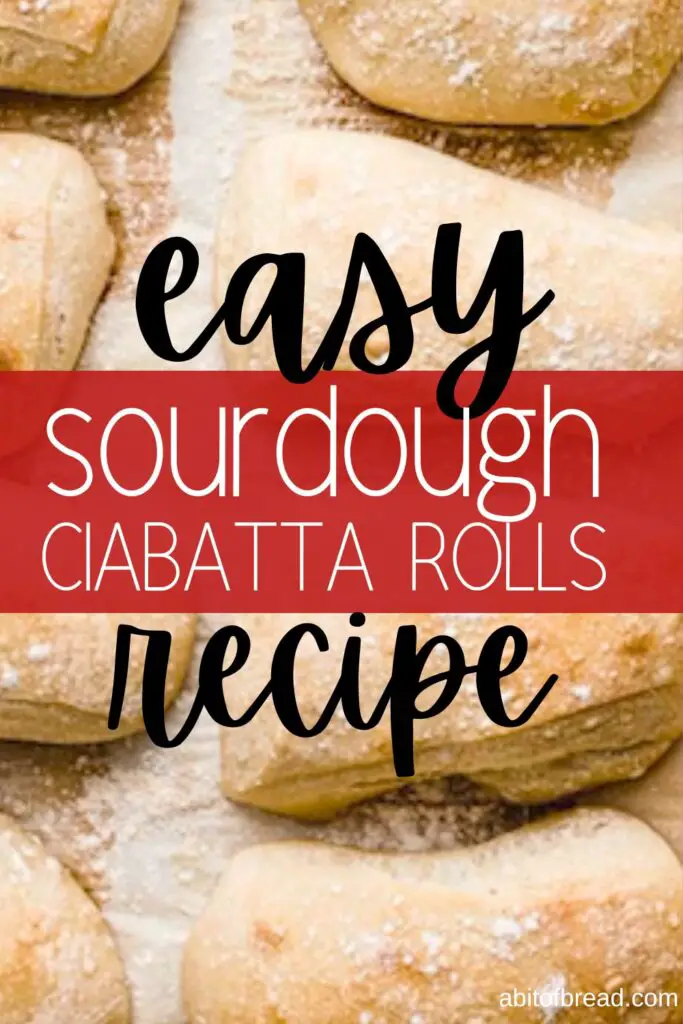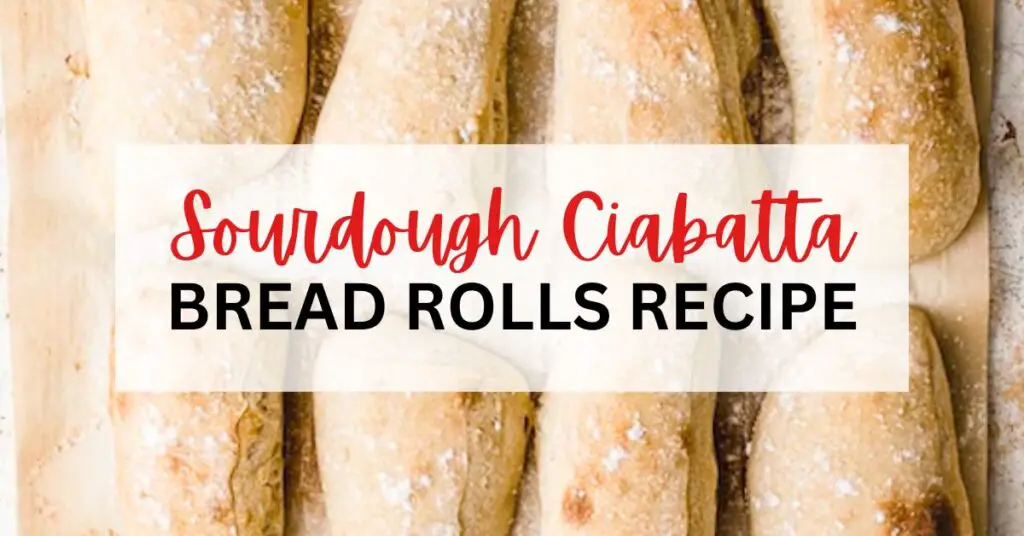In this easy recipe post, you’ll learn how to make sourdough ciabatta rolls that’ll get your tastebuds singing using these simple steps and ingredients.
Sourdough Ciabatta Roll Ingredients
- 1/2 cup active sourdough starter
- 4 cups + 2 tablespoons bread flour
- 1+2/3 cup lukewarm water
- 2 teaspoons of salt
Disclaimer: some links used in this post are affiliate links, which means I will earn a small commission if you purchase using my provided links at no extra cost to you. I only recommend products I think will be helpful to you and bring you one step closer to creating tasty bread masterpieces!
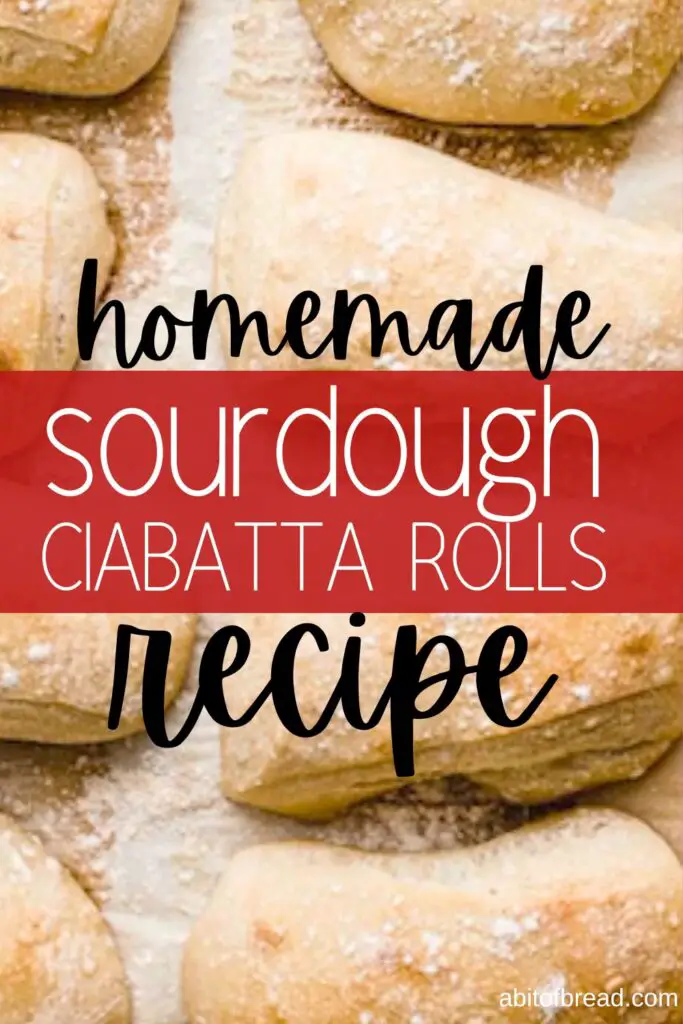
Sourdough Ciabatta Roll baking steps
Let’s dive into how to make those iconic pillow-shaped rolls that are great for making sandwiches or a crumbly stand-alone snack.
Making the Ciabatta Dough
To begin, mix water and sourdough starter together in a large bowl using a spatula.
Next, add salt and some bread flour.
If you don’t have bread flour, you can also use all purpose flour – but, bread flour has a bit higher gluten content in it. Which means it’ll give us the gluten development for those large, open crumb (aka the iconic large holes) that we want in a sour dough ciabatta roll.
To start, use a spatula to mix everything together because it’s very sticky. Then once you can’t mix anymore, switch to mixing with your hands until there are no dry bits left in the bowl.
Now, cover the dough using plastic wrap and let it sit on the counter for an hour to rest and do its first rise at room temperature.
Stretch and folding
Once the hour is up, we’re going to do three sets of stretches and folds.
For the first set, use some water to wet hands to better handle the sticky dough. Pick up the side of the dough, stretch it up and over itself. Once you’ve done that, give your bowl a quarter turn and repeat. You’re going to continue to do that until that bowl has come full circle.
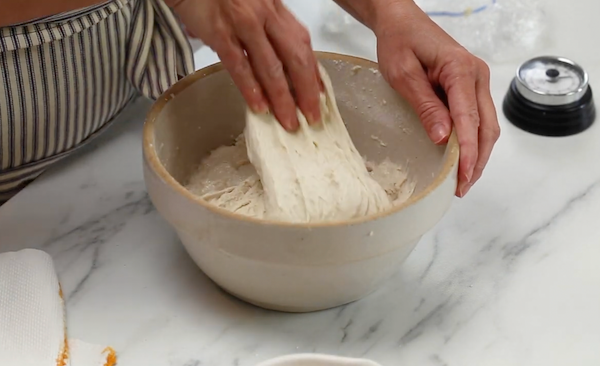
During this first set, you will have very wet dough. But you’ll see over the next couple of sets, how the texture of the dough changes.
Cover the bowl and let the ciabatta dough rest for 30 minutes.
Then, do your second set of stretches and folds again, making sure to use some water to wet your hands, so the dough doesn’t stick. You’ll pull that dough up from the sides of the bowl until it starts to want to spring back.
Be sure to gently pull it and fold it over and once you have finished, turning that bowl all the way around.
Cover the bowl and let sit for another 30 minutes.
Then, it’s time to do the final set of stretches and folds. So we’re just going to repeat the same process steps as before.
Stretching and folding dough is so incredibly satisfying and every time you do this, you can just see how it changes the texture of the dough, helping it develop the gluten and get that nice springy feel.
Next, cover the bowl and let the dough have a rise time of a couple of hours or until it’s risen by about 50 percent to get the best result.
Once the dough has risen, you can do either of two things:
- you can put this dough in the fridge, and let it sit for up to 36 hours before you divide it and bake it….
- or you can bake it the same day.
Divide the dough
Once you’re ready to bake, it’s time to divide up the dough.
Begin by generously flouring the surface of the dough and your work surface, because this is a very high hydration dough, which means it has a lot of moisture and will be sticky.

Turn the dough onto the floured work surface and add a bit more flour on top. Begin by pressing out the dough into a rectangular shape and then cut the dough into eight equal pieces.
👉 I always highly recommend cutting with this bench scraper.
A little tip is to cut the dough in half first, then cut those two pieces in half and then cut those other two pieces in half. This helps cut the dough into equal parts.
Get it ready for the oven
Then, simply take each of your rectangle pieces and lay it onto a sheet pan lined with a piece of parchment paper (or any large baking sheet), sprinkle with a little flour on top of the dough and then cover with a tea towel. Let those pieces rise for a couple of hours until they are puffy.

Then, place your sheet pan onto your oven rack and bake these at 475 Fahrenheit for 10 minutes. Then, lower the oven temperature down to 425F and bake them an additional 20 minutes or until they’re a golden color – essential for that crisp crust we like.
Take out of the oven and let cool for about 30 minutes on a wire rack – then, slice open and enjoy your freshly baked homemade ciabatta bread with some olive oil and a dash of balsamic vinegar (our personal fave). Ciabatta buns are a great recipe and a wonderful way to be a home baker.
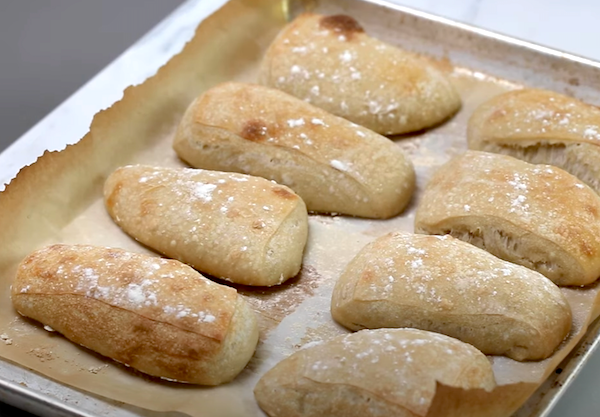
If you want to save your bread for another time, be sure to wrap it in plastic wrap and seal it inside an airtight container to maintain freshness and store on your countertop for a few days or in the freezer if you don’t want to eat them right away.
